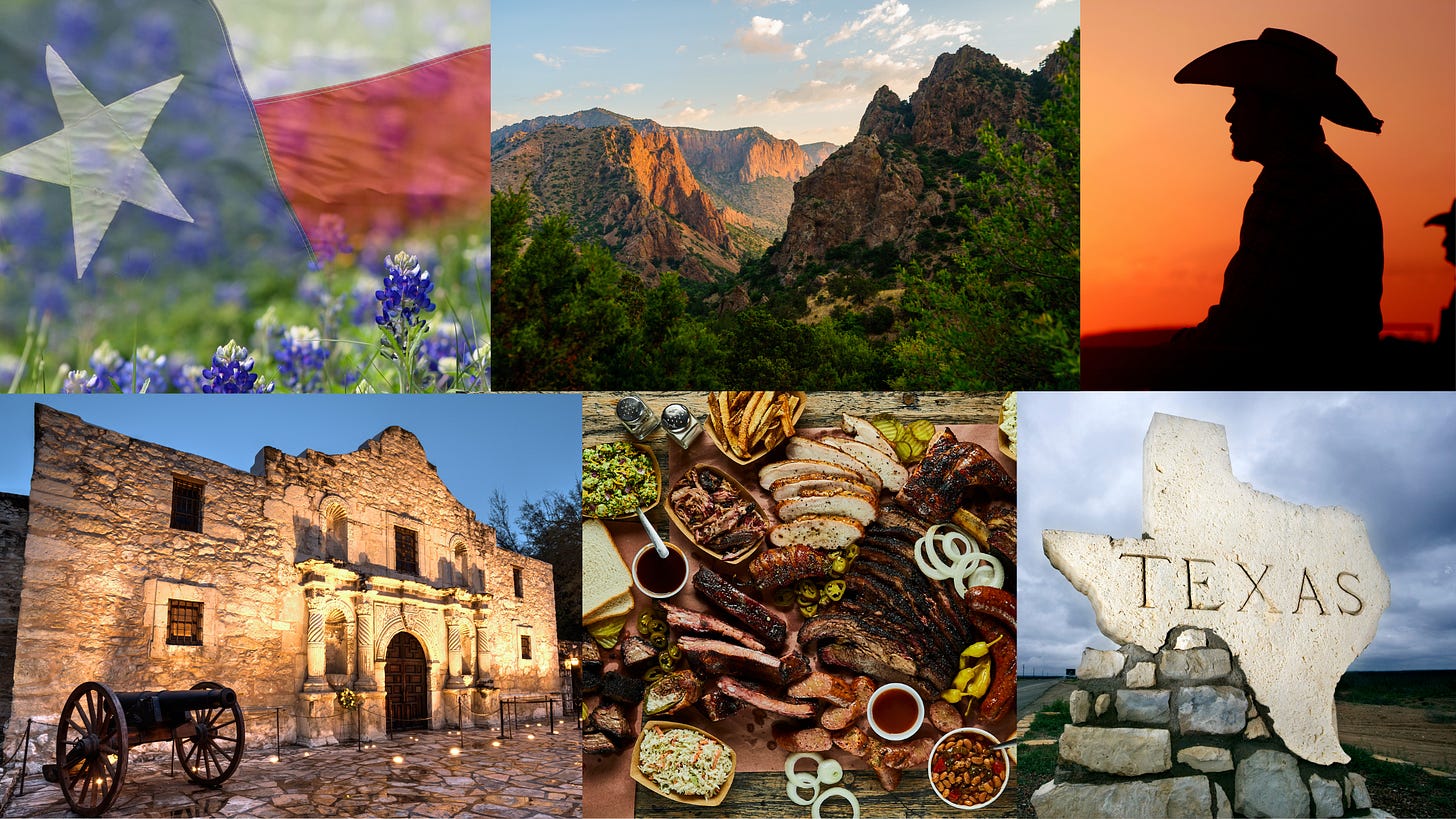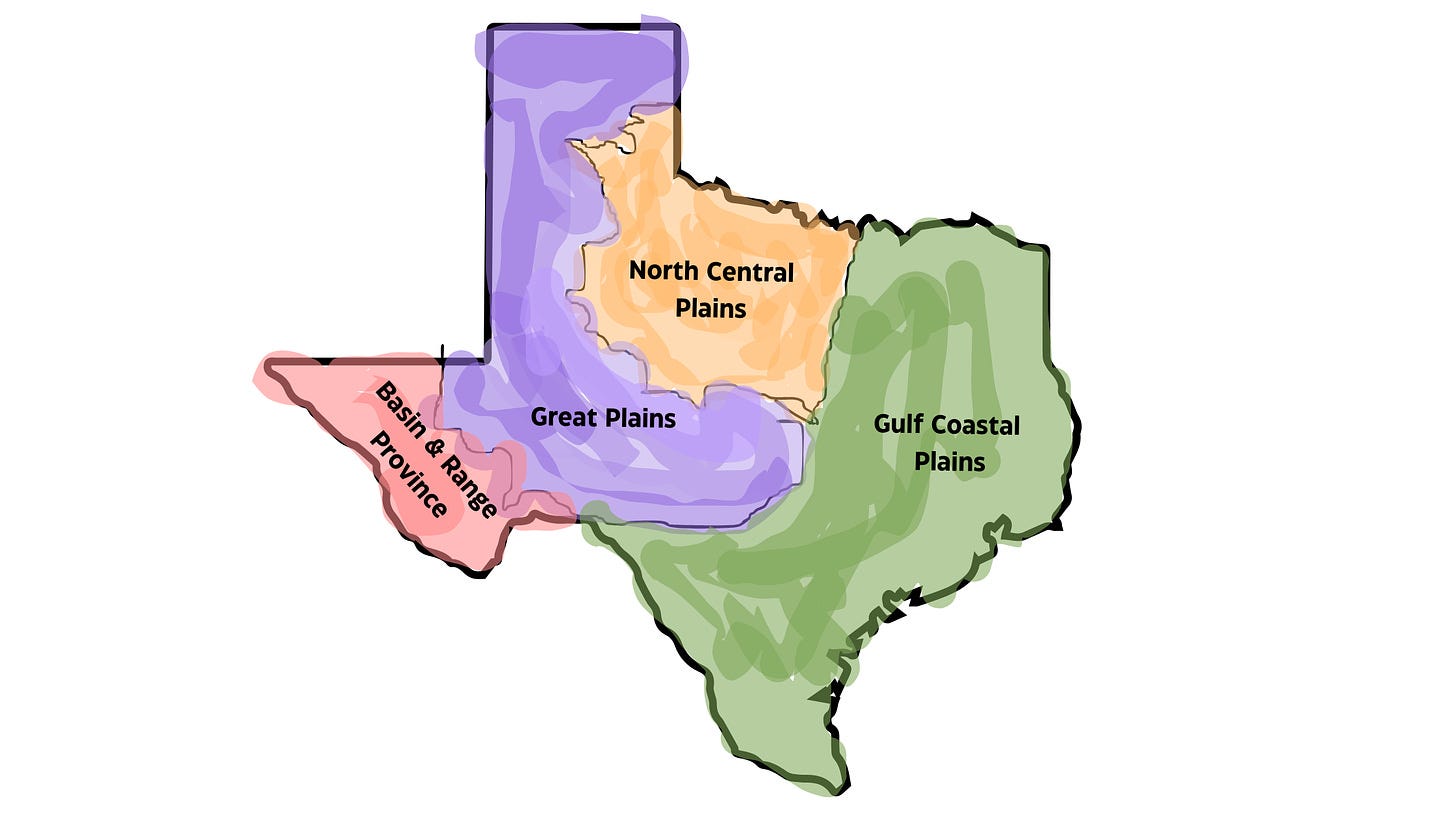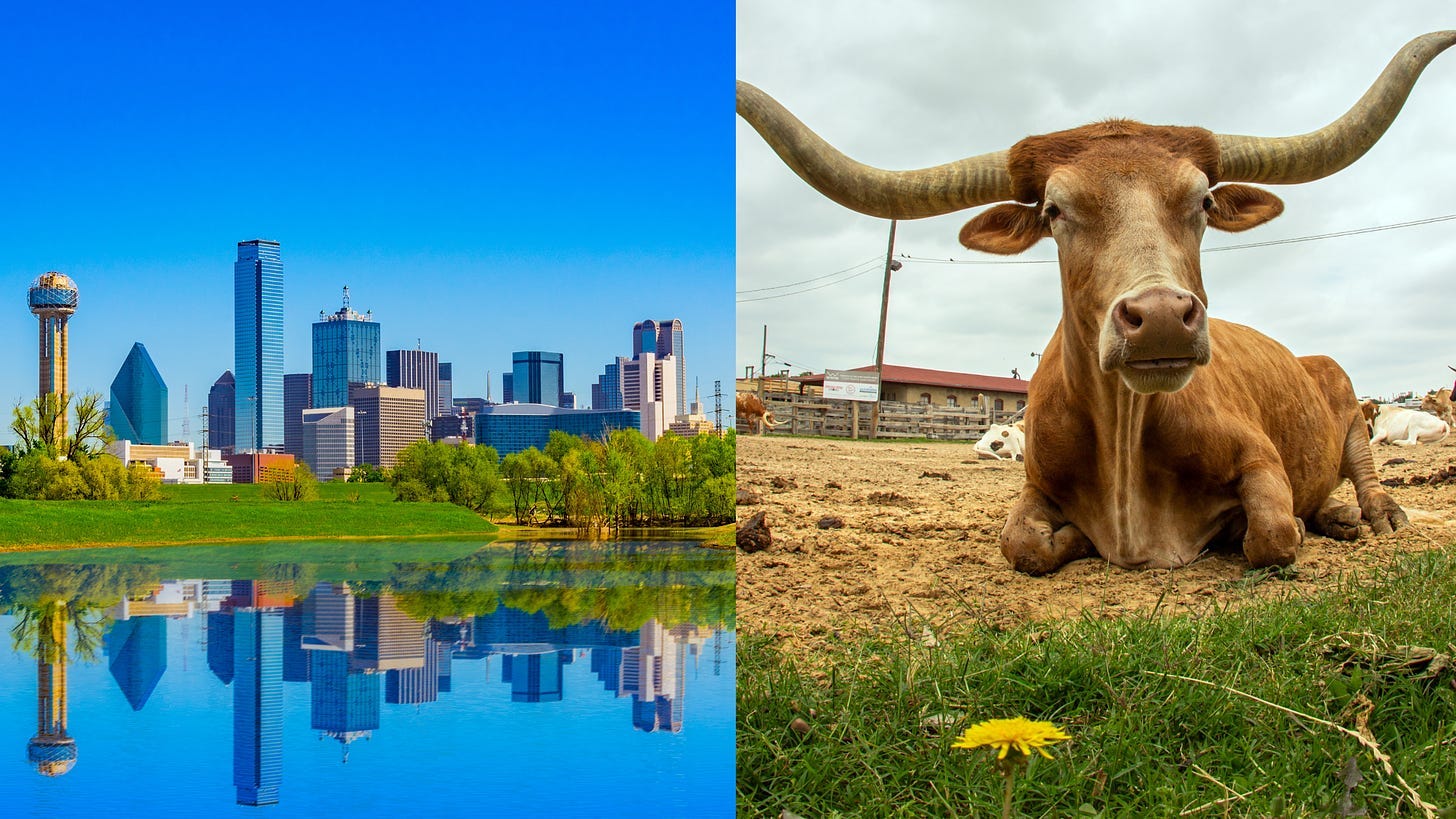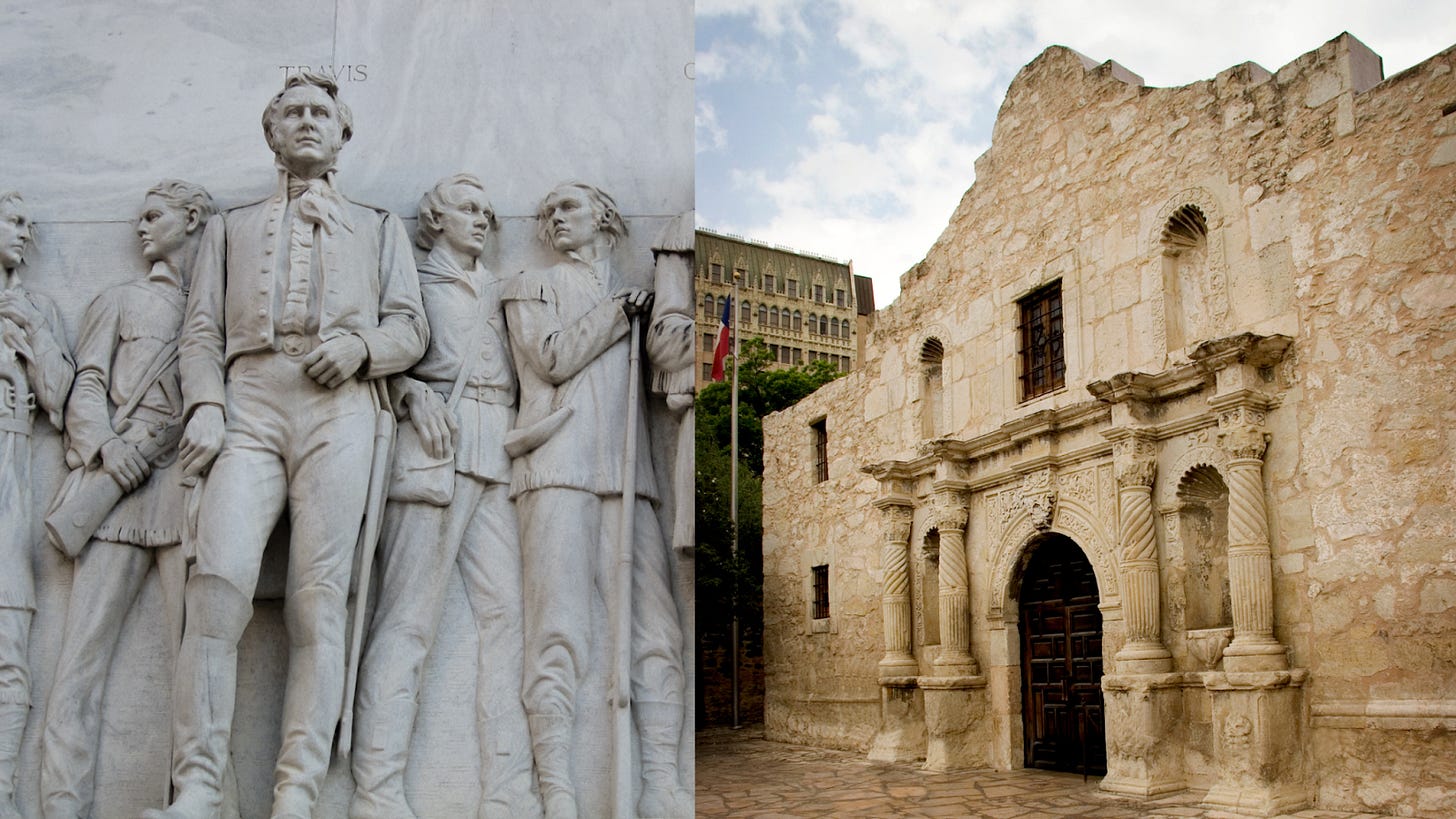Is Everything Bigger and Better in Texas? You Tell Us!
Discover the Rich Geography, History, and Culture of the Lone Star State: Texas!
Is everything truly bigger and better in Texas? Known as the "Lone Star State," a symbol of its proud independence, Texas is home to the beautiful bluebonnet, its official state flower, which blankets the fields in vibrant shades of blue each spring. With Austin as its lively capital, Texas offers a diverse experience through its vast landscapes, rich history, mouthwatering barbecue, lively Tejano music, and unique traditions. There’s always something that grabs your attention in this iconic state. Let’s explore what makes Texas truly one of a kind. So, is Texas as grand as they say? Keep reading to find out!
Texas Geographical Explanation
Texas is located in the southwestern United States, bordering Mexico, and neighboring New Mexico, Oklahoma, Arkansas, and Louisiana. Covering nearly 270,000 square miles, it’s the second-largest state in the U.S. With four distinct regions, Texas offers incredible geographical diversity.
Great Plains: Known for its vast, open spaces, this region features rolling hills, grasslands, and impressive natural landmarks like Palo Duro Canyon and Garner State Park. It’s also home to scenic landscapes, including vineyards and rivers, which contribute to its agricultural richness.
Left: Palo Duro Canyon Right: Garner State Park
Gulf Coastal Plains: This coastal region stretches along the Gulf of Mexico and is characterized by sandy beaches, wetlands, and bustling cities like Houston and Galveston. It also includes low-lying plains and a humid climate, supporting both industry and tourism.
Left: Piney Woods Canyon Right: Gulf of Mexico
North Central Plains: A region of rolling prairies and scattered lakes, it’s home to the Dallas-Fort Worth metroplex, one of the largest urban centers in the state. The area blends urban development with expansive agricultural lands and natural beauty.
Left: Dallas Right: Longhorn in Fort Worth
Basin & Range Province: Marked by rugged desert landscapes and mountain ranges, this region includes dramatic areas like Big Bend National Park and the Guadalupe Mountains. The city of El Paso lies within this area, known for its dry, arid climate and striking natural scenery.
Left: Big Bend National Park Canyon Right: Guadalupe Mountains
Beautiful Landmarks
Texas is home to some of the most stunning landmarks in the U.S. that showcase its rich history and natural beauty. Here are three must-visit spots:
The Alamo (San Antonio): One of the most famous historical sites in Texas, the Alamo is a symbol of Texas' fight for independence. Visitors can tour the mission-turned-fortress and learn about the pivotal 1836 battle.
Big Bend National Park: Located in West Texas, this park offers breathtaking views of rugged mountains, canyons, and the winding Rio Grande. It’s a paradise for hikers, campers, and nature lovers looking to explore the great outdoors.
San Antonio River Walk: This vibrant urban waterway winds through downtown San Antonio, lined with shops, restaurants, and cultural landmarks. The River Walk is perfect for a leisurely stroll while enjoying the lively atmosphere of the city.
Short History Explanation
Before European settlers arrived, the North Central Plains of Texas were home to Native American tribes like the Comanche, Tonkawa, Wichita, and Kiowa. These groups lived by hunting, farming, and trading with each other. They had a strong connection to the land and fought to protect their homes as more settlers arrived.
In the 1600s, Spanish explorers came to Texas, bringing their culture, religion, and new ways of life. They built missions and forts and made Texas part of the Spanish Empire. After Mexico became independent from Spain in 1821, Texas became part of Mexico. However, American settlers in Texas began to have problems with the Mexican government, which led to conflict.
In 1836, Texas declared its independence from Mexico after battles like the famous Battle of the Alamo. Soon after, the Texans won the Battle of San Jacinto and became an independent country, the Republic of Texas. Texas stayed independent for almost 10 years before joining the United States in 1845 as the 28th state.
Local Cuisine
When it comes to food, Texas is a haven for hearty, flavorful dishes. Here are three must-try culinary experiences
Texas BBQ: Known for its slow-smoked meats, especially brisket, Texas BBQ is an art form. Whether you’re savoring tender ribs or juicy sausage, the smoky flavor and rich seasoning make this a must for any visit.
Tex-Mex: A blend of Mexican and Texas flavors, Tex-Mex is all about bold, spicy, and cheesy goodness. Dishes like enchiladas, tacos, and fajitas take center stage, often served with a side of queso and salsa.
Chicken-Fried Steak: A Southern classic with a Texas twist, this dish features a tenderized steak, breaded and fried to golden perfection, served with creamy gravy. It’s comfort food at its finest.
Unique Traditions/Celebrations
Texas knows how to celebrate in style with some of the biggest and most unique events in the country.
The State Fair of Texas, held annually in Dallas, is one of the largest fairs in the U.S., famous for its thrilling rides, deep-fried foods, and the towering figure of Big Tex.
Another beloved tradition is Fiesta San Antonio, a vibrant, multi-day festival celebrating the city’s rich culture with parades, music, and incredible food.
And, of course, there’s the Houston Livestock Show and Rodeo, the largest rodeo in the world, where visitors can enjoy rodeo competitions, livestock exhibitions, and top-tier concerts.
Famous Music and Artists
Texas has given rise to some of the most iconic music and musicians in American history. From country and blues to rock and Tejano, the state’s musical landscape is as diverse as its geography.
Country Music: Texas is known for its deep roots in country music, with legends like Willie Nelson, George Strait, and Waylon Jennings all hailing from the Lone Star State. Texas country has its own distinctive sound, often blending traditional country with a bit of rock and outlaw spirit.
Blues: The Texas blues scene has produced some of the greatest guitarists of all time, including Stevie Ray Vaughan and T-Bone Walker. Austin, in particular, is known for its vibrant blues scene, with live music pouring out of clubs across the city.
Tejano Music: Texas is also the birthplace of Tejano music, a genre that blends Mexican and American influences. Artists like Selena Quintanilla, known as the "Queen of Tejano," brought the genre to mainstream success and left a lasting legacy.
Rock and Roll: Texas has also made its mark on rock music, with bands like ZZ Top and artists like Buddy Holly pioneering rock 'n' roll in the early days of the genre.
Final Thoughts
From its vast geographical diversity to its rich history, unique food, unforgettable celebrations, and musical legends, Texas truly lives up to its reputation. Whether you're exploring its natural beauty or diving into its cultural traditions, Texas is a state that leaves a lasting impression. So, is everything bigger and better in Texas? You’ll have to experience it for yourself!
Want to learn more about Texas? Be sure to check out my podcast Episode 4: All About Texas. [LISTEN HERE]
If you’d like to learn more about American culture while improving your English, book a FREE courtesy class with me today!

















